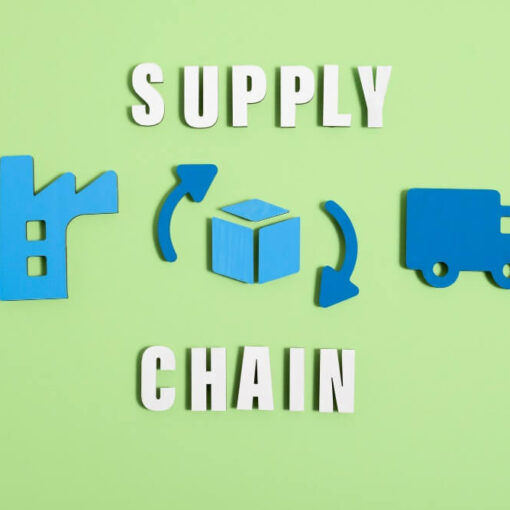In today’s fast-paced business world, staying ahead means working smarter, not harder. That’s where Business Process Automation (BPA) comes in. BPA is like a super-helper for companies, taking care of repetitive tasks so people can focus on more important work. It’s not just a fancy tool – Business Process Automation for Industries becoming a must-have for businesses that want to grow and succeed.
More and more companies are jumping on the BPA bandwagon. In fact, experts say that by 2025, over 80% of businesses will be using some form of automation. Whether in banking, healthcare, retail, or education, understanding BPA is vital to keeping up with the competition. It’s all about making work easier, faster, and more accurate. So, let’s dive in and explore why it’s so essential for industries to get on board with Business Process Automation.
The Growing Need for Business Process Automation for Industries
The demand for BPA is on the rise, and statistics reveal that many companies are expected to adopt intelligent automation within the next few years. According to some insights, over 80% of businesses anticipate using automation technologies by 2025. This trend spans various sectors, including banking, healthcare, retail, and education. As businesses face increasing operational complexities, embracing automation becomes vital for staying ahead.
With automation, companies can streamline their processes, reduce time spent on repetitive tasks, and improve overall productivity. For instance, automating inventory management allows businesses to track stock levels in real time, reducing the risk of overstocking or stockouts. Understanding BPA empowers organizations to navigate these changes effectively.
Core Reasons for Understanding Business Process Automation for Industries
Enhancing Efficiency and Productivity
One of BPA’s primary advantages is its ability to enhance efficiency and productivity. By automating routine tasks such as data entry, invoice processing, and customer follow-ups, employees can focus on more strategic work that adds value to the business. For example, a company that automates its sales reporting can free up sales staff to engage more with customers, leading to better sales outcomes.
Reducing Operational Costs

BPA can lead to significant cost savings over time. While there may be initial setup costs, the long-term benefits often outweigh these expenses. Automating processes reduces the need for manual labor, which can help cut labor costs. According to research, businesses that implement BPA usually see a reduction in operational costs by 20-30%. This financial relief allows companies to allocate resources more efficiently and invest in other growth initiatives.
Improving Accuracy and Reducing Errors
Human error is a common issue in many business processes. Mistakes can happen when tasks are handled manually, leading to costly repercussions. BPA minimizes these errors by relying on automated systems that perform tasks consistently and accurately. For example, a financial department using automated invoice processing software can expect fewer billing errors, improving relationships with clients and vendors.
Facilitating Better Customer Experience
Understanding BPA is crucial for enhancing customer experiences. Automated processes can lead to faster service delivery, helping businesses meet customer expectations more effectively. For instance, an e-commerce platform that automates order processing can provide customers with timely updates on their orders, resulting in increased satisfaction. A positive customer experience retains existing clients and attracts new ones, driving growth.

Ensuring Compliance and Governance
In many industries, compliance with regulations is a necessity. BPA plays a key role in ensuring that organizations meet legal requirements and maintain good governance. Automated systems can quickly generate compliance reports and help monitor processes for discrepancies. This capability is precious in industries like finance and healthcare, where regulatory standards are strict.
Fostering Innovation and Agility
In an ever-changing market, businesses must remain agile and innovative to succeed. Understanding BPA enables companies to adapt quickly to market demands and implement new strategies. Automation frees up resources, allowing organizations to invest in research and development or explore new product lines. By fostering a culture of innovation, businesses can stay relevant and competitive.
The Role of Intelligent Automation in BPA

Intelligent Automation (IA) is a game-changer in Business Process Automation (BPA). By combining traditional automation with advanced technologies like artificial intelligence (AI) and machine learning (ML), IA adds intelligent capabilities that allow systems to learn and adapt over time. For example, when a business uses IA, it can analyze data to spot trends and make decisions without human input. It means that companies can predict customer preferences and market demands more accurately. Imagine a retail store that uses AI to analyze shopping habits; it can stock items that customers are likely to buy, reducing wasted inventory and increasing sales. By understanding how IA fits into BPA, businesses can tap into even greater efficiencies and make smarter choices.
Moreover, IA can help improve decision-making and enhance customer experiences. For instance, in a healthcare setting, IA can assist in processing patient data quickly and accurately, leading to faster treatment decisions. In the service industry, automated systems can handle customer inquiries efficiently, providing timely updates and responses. It saves time and improves customer satisfaction, as clients receive the information they need without long wait times. Overall, grasping the concept of Intelligent Automation within BPA empowers organizations to operate more effectively and respond to the fast-changing demands of today’s market.
Overcoming Challenges in Business Process Automation
While the benefits of BPA are substantial, organizations often face challenges when implementing automation. One common hurdle is the initial cost of setup and technology. Although the return on investment (ROI) can be significant, many companies, like those using Salesforce’s Customer 360, see a positive ROI within nine months, and businesses must be prepared for upfront expenses.
Additionally, some employees may resist changes associated with automation, fearing job loss or a disruption in their routine. Leaders must communicate the purpose of automation clearly: to empower employees, not replace them. Engaging employees in automation can help alleviate fears and foster a more collaborative work environment.
Steps to Successfully Implement Business Process Automation
To harness the benefits of BPA effectively, companies can follow these six steps:
- Identify Critical Processes: Determine which processes would benefit most from automation. Gathering feedback from employees can help identify time-consuming tasks that may not add much value.
- Assess Potential Improvements: After identifying key processes, analyze how they can be improved. Consider whether complete automation is feasible or if automating specific tasks would suffice.
- Research Tools and Technologies: Explore various automation tools that align with your business needs. Look for providers that offer technology and strategic partnerships to address your specific challenges.
- Design and Test Automated Processes: Once you have the right tools, redesign your workflows and conduct tests to ensure everything runs smoothly. This step may require adjustments to optimize performance.
- Train the Workforce: Equip employees with the skills needed to operate new tools effectively. Utilizing on-demand training platforms can facilitate this process, ensuring everyone feels confident in their roles.
- Implement and Monitor: After refining your processes, implement them and continuously monitor their performance. Establish key performance indicators (KPIs) to measure success and make further adjustments as necessary.

Conclusion
Understanding Business Process Automation (BPA) is no longer optional for industries—it’s a necessity. In today’s competitive landscape, businesses that embrace BPA gain a significant edge. They operate more efficiently, save money, reduce errors, and provide better customer experiences. Moreover, BPA frees up valuable human resources to focus on innovation and strategy, driving companies forward.
While implementing BPA comes with challenges, the long-term benefits far outweigh the initial hurdles. As we move further into the digital age, the companies that thrive will be those that effectively leverage automation. By understanding and implementing BPA, businesses across all industries can position themselves for success, adaptability, and growth in an ever-evolving market. The future of business is automated – and understanding BPA is your key to unlocking that future.





